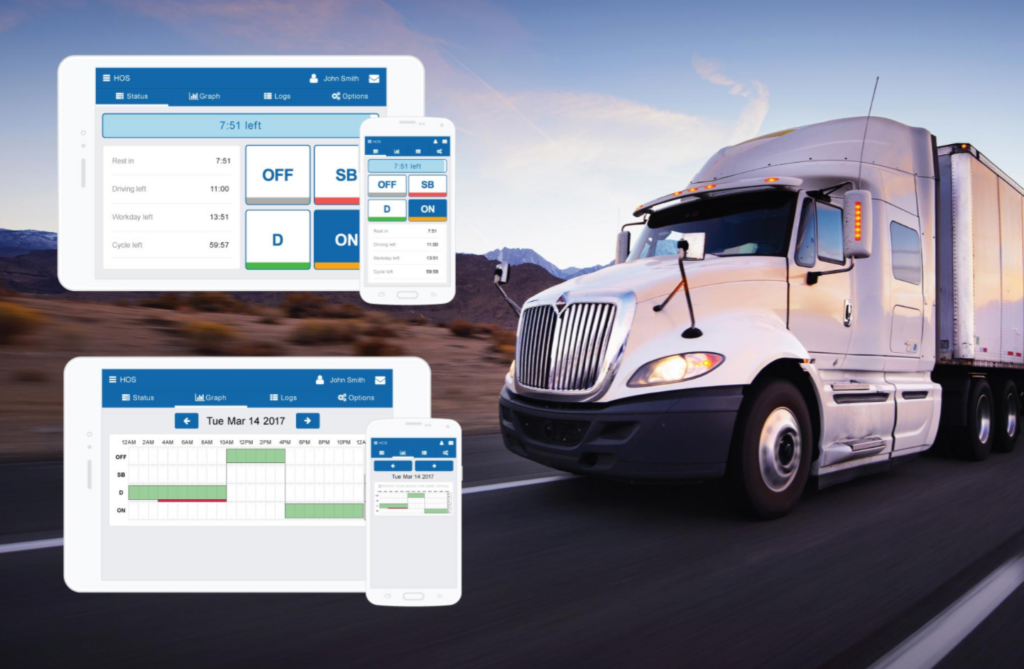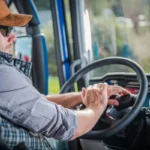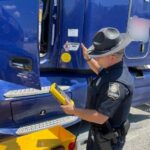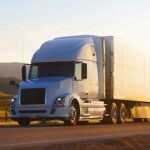The California Highway Patrol has opened a comment period for a regulation requiring intrastate carriers in California to be equipped with ELDs, with a projected implementation date of the start of 2024. According to Sgt. Dave Kelly of the CHP, this is a regulation in which California is behind compared to other states in terms of implementing regulations on safety.
In a lengthy explanation of the reason for the proposed rule published by the CHP, the agency is straightforward on its core message: “Currently state regulations do not require an ELD as the method for preparing an intrastate driver’s (Record of Duty Status) and are subsequently not compatible with federal regulations.”
Interstate does not necessarily mean that a state line is crossed. For example, drayage cargo that stays within California but is hauling freight that came in via a port or is headed that way is considered interstate. This sector has been using ELDs under a federal mandate requiring the devices to be used to monitor compliance with hours of service regulations.
The CHP has published an impact statement that estimates the number of trucks that would be affected by the new rule. However, it acknowledges that there are some unknowns, such as how many intrastate vehicles already use ELDs, even though there is no mandate for them, as they are subject to HOS regulations and currently record HOS data on paper logs.
The agency comes up with a precise figure: 53.9% of what it estimates are 366,800 drivers to be affected by the rule are not using ELDs now, and that means 197,043 vehicles will need to step up to meet the requirement.
“We’ve been telling the industry for some time that this has been coming,” Kelly told FreightWaves. He said the Federal Motor Carrier Safety Administration was “on us” because its state rules on intrastate drivers using ELDs are not in alignment with the federal ELD rule, even though intrastate drivers must follow the HOS rules that the ELDs are supposed to monitor.
“We are anticipating an effective date of Jan. 1, 2024,” Kelly said.
The California rule will retain federal exemptions for ELD use for several types of driving, including trucks that don’t operate more than eight days within a 30-day period, trucks in a “driveaway/towaway” operation and trucks manufactured before 2000. Sgt. Dave Kelly of the CHP stated that California is one of a few states where the intrastate ELD requirement is not on the books and he had been informed by a third party that the number of states not in compliance might be as low as two, with California being one of them, he is not sure of the other state or states that might be in the same position as California.
“This is going to happen,” Joe Rajkovacz. director of government affairs and communications at the Western States Trucking Association (WSTA), said of the rule. A large number of WSTA members do operate mostly short-haul routes, which would have allowed them to avoid the ELD mandate in the past.
But Rajkovacz said his organization is not happy with one thing the state didn’t do: bring the air-mile exclusion into line with federal rules.
The current federal rule exempts truck drivers from ELD mandates if all their movements are within a 150 air-mile radius of the base of their operations and their number of hours worked doesn’t exceed 14 hours. In such cases, the necessary data can be recorded on paper logs, which is no longer used in most of the trucking industry since the ELD mandate started.
But the California exclusion is 100 miles and a 12-hour limitation.
What that means, Rajkovacz said, is that a California truck working intrastate faces that tighter limit, while a truck that is considered interstate, like a drayage truck, has broader limits of 150 miles/14 hours even if it is doing all its work in California, which is the case of many drayage vehicles.
Rajkovacz said WSTA was hoping to see California align with the broader limits as well, given that its new requirements on intrastate ELDs are part of an effort to come into compliance with federal law.





